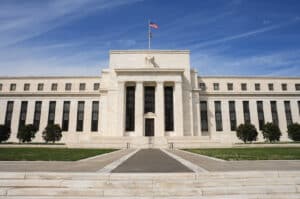The Federal Reserve Wednesday made its first interest rate cut in over two years a large one – 50 basis points – and senior central bankers signal more cuts are coming.
The central bank’s action lowered its key rate to roughly 4.8 percent, down from a two-decade high of 5.3 percent, where it had stood for 14 months as it struggled to curb the worst inflation streak in four decades. Inflation has tumbled from a peak of 9.1 percent in mid-2022 to a three-year low of 2.5 percent in August, not far above the Fed’s 2 percent target.
In an anonymous survey of the central bankers who sit on the Fed’s interest rate policy committee show that Fed leaders expect to make a further 25-basis-point cut when they meet in November and another in December. And four more rate cuts are possible in 2025 and two more in 2026, the survey showed.
But will Wednesday’s cut help the Massachusetts housing market or its beleaguered housing development sector? Likely not, say experts.
Impact on Real Estate
First, Boston-area housing market-watchers expect the cuts to drive more homebuyers into the market, pushing up demand for the limited number of homes available.
Average mortgage rates have already dropped to an 18-month low of 6.2 percent as bond traders anticipated the Fed’s actions, according to Freddie Mac, spurring a jump in demand for refinancings.
And real estate developers and banking experts say rates would need to come down further to make many financing for the stalled housing developments pencil out and to .
However, Wednesday’s cut and others planned this year might make it harder for some investors who were planning to take advantage of commercial property distress by enabling at least some owners to refinance, CBRE experts said in a public conference call following the Fed’s announcement.
“Does this affect their effort to execute that strategy? Yes, it does,” said the commercial brokerage’s global chief economist and head of Americas research Richard Barkham.
While the total cuts to the Fed’s benchmark short-term interest rate expected by the end of the year will help banks with troubled office loans on their books, and will lead to a “modest improvement in the cost of capital” for multifamily developers, Barkham said, most banks will still be limited in their ability to finance acquisitions, refinance existing buildings or lend for new development.
“We’re seeing continued caution on the part of the banks in lending to real estate…but there’s a lot of alternative [private] capital out there,” he said. “I don’t think we’re going to see an explosion. I do think we’re going to see a very meaningful uptick in investment activity.”
Barkham put that potential growth at 10 percent to 20 percent.
Inflation Largely Defeated
In his press conference following Wednesday’s decision, Fed Chair Jerome Powell came closer than he has before to declaring victory over inflation.
“We know it is time to recalibrate our [interest rate] policy to something that’s more appropriate given the progress on inflation,” Powell said. “We’re not saying, ‘mission accomplished’ … but I have to say say, though, we’re encouraged by the progress that we have made,” Powell told reporters.
“The U.S. economy is in a good place,” he added, “and our decision today is designed to keep it there.”
The Fed’s next policy meeting is Nov. 6-7 – immediately after the presidential election.
The central bank’s officials fought against high inflation by raising their key rate 11 times in 2022 and 2023. Wage growth has since slowed, removing a potential source of inflationary pressure. And oil and gas prices are falling, a sign that inflation should continue to cool in the months ahead. Consumers are also pushing back against high prices, forcing such companies as Target and McDonald’s to dangle deals and discounts.
Yet after several years of strong job growth, employers have slowed hiring, and the unemployment rate has risen nearly a full percentage point from its half-century low in April 2023 to a still-low 4.2 percent. Once unemployment rises that much, it tends to keep climbing. Fed officials and many economists note, though, that the rise in unemployment this time largely reflects an influx of people seeking jobs – notably new immigrants and recent college graduates – rather than layoffs.
At issue in the Fed’s deliberations is how fast it wants to lower its benchmark rate to a point where it’s no longer acting as a brake on the economy – nor as an accelerant. Where that so-called “neutral” level falls isn’t clear, though many analysts peg it at 3 percent to 3.5 percent.
Material from The Associated Press was used in this report.







